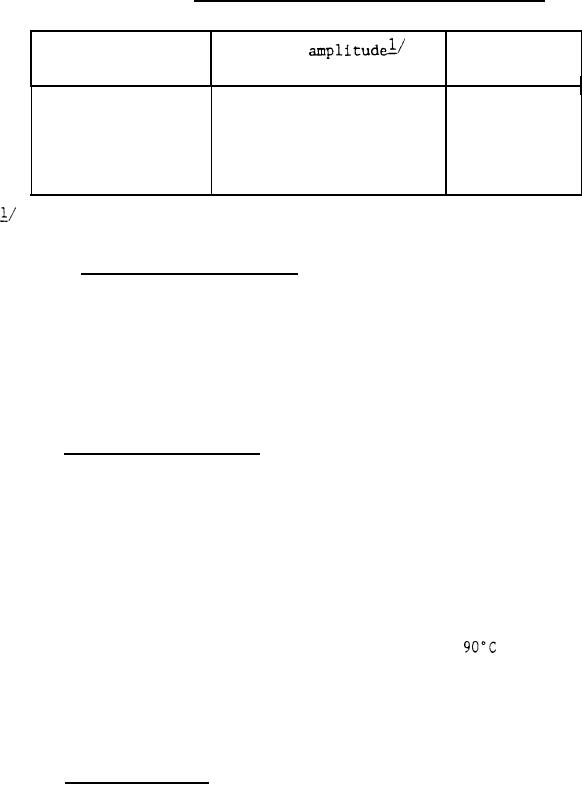 |
|||
|
|
|||
| ||||||||||
|
|  MIL-F-24702(SH)
intervals of 1 Hz, at the amplitudes shown in table III. At each frequency, the
vibration shall be maintained for times shown in table III, An acceptable
alternative will be a continuous sweep from 4 to 50 Hz, over a period of at least
1 hour, with the amplitudes shown in table III.
TABLE III. Vibr atory displacement single amplitude.
Time
Frequency range
Table
(inches - minimum)
(Hz)
(minutes)
4
to
15
0.05
2
16
to
25
.04
1
26
to
33
1
.03
34
to
40
.02
1
41
to
50
.01
1
For Government conducted tests, the maximum amplitude shall not
exceed the minimum required amplitude by more than 20 percent.
4.7.6.3 Media migration analysis. The port blanks shall be removed and the
filter and housing shall be flushed with 3000 milliliters (mL) minimum of
prefiltered fluid and the effluent collected. The effluent shall be filtered
through a membrane filter disk, 47 millimeters (mm) diameter, absolute 0.8
micrometer, type AA Millipore, or equal, which has been previously washed with
prefiltered solvent, The membrane from this analysis and the membrane retained
from the degree of filtration test (see 4,7.2) shall be examined for evidence of
filter media migration. There shall be no media migration identifiable as coming
from the filter element medium.
4.7.7 Materi al compatibility. Elements 4, 5, and 6 shall be tested for
compatibility with fluid conforming to MIL-H-19457, MIL-H-22072 and MIL-H-17672
One patch (four required; each approximately 2 by 4 inches) of the filtration
media shall also be tested for compatibility with each of above fluids. An
untested fourth patch shall be retained for microscopic comparison with the
immersed patches on completion of the tests. Test patches shall be taken from a
single representative specimen of filtration media (approximately 8 by 4 inches)
Each test fluid shall be thoroughly mixed with 5 percent water prior to testing,
and stirred approximately every 24 hours thereafter, weekends excepted.
During
the test, water and fluid may be added as necessary to make up evaporation
losses.
Elements and testpatches shall be completely immersed in appropriate
test fluids as designated above, for 195 hours at 85 to
After immersion
and decreasing of the elements and patches, there shall be no visible evidence of
degradation or corrosion. Element bubble points shall be not less than 85
percent nor more than 120 percent of the bubble point at the beginning of the
test. Patches shall be compared to the untested specimen under a microscope and
visible difference noted.
4.7.8 Additional tests. After the fluid compatibility tests, element
numbers 4, 5, and 6 may be subjected to any of the tests listed for element
numbers 1, 2, or 3 and shall satisfactorily pass those tests. Tests to be
conducted and elements selected shall be at the discretion of NAVSEA or its
representative.
10
|
|
Privacy Statement - Press Release - Copyright Information. - Contact Us |